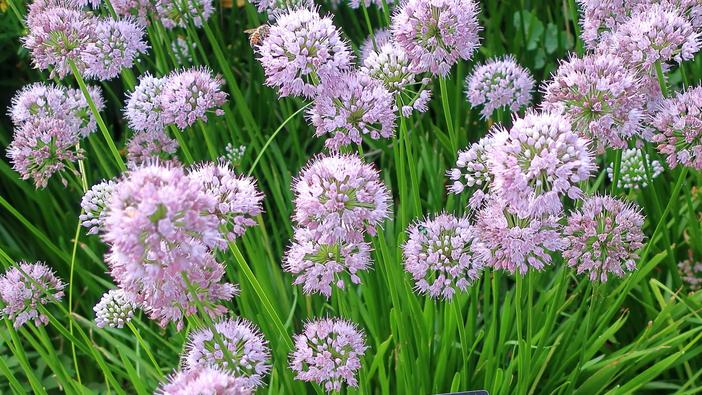Summer Beauty Allium
(Allium tanguticum)
Summer Beauty Allium (Allium tanguticum)
/
/

cultivar413
CC BY 2.0
Image By:
cultivar413
Recorded By:
Copyright:
CC BY 2.0
Copyright Notice:
Photo by: cultivar413 | License Type: CC BY 2.0 | License URL: https://creativecommons.org/licenses/by/2.0 | Uploader: Ser Amantio di Nicolao | Publisher: Wikipedia Commons


Estimated Native Range
Summary
Allium tanguticum, commonly known as Summer Beauty Allium, is a perennial herb native to alpine meadows and slopes in Gansu, Qinghai, and Tibet in China, where it thrives at elevations of 6562-11483 feet. This ornamental onion grows from a round to egg-shaped bulb and produces a scape that can reach up to 20 inches tall. The flat, basal leaves are shorter than the scape. During the flowering season, which occurs in mid to late summer, it boasts an umbel crowded with many star-shaped, vibrant purple flowers that are highly attractive to pollinators.
Summer Beauty Allium is valued for its ornamental flowers and its ability to adapt to a range of garden conditions. It is often used in rock gardens, borders, and as a cut flower due to its long-lasting blooms. This allium prefers full sun to part shade and requires well-drained soil. It is relatively low maintenance, drought-tolerant once established, and is not prone to serious pest or disease problems. However, it can be susceptible to onion fly and thrips. It is also deer and rodent resistant, making it a good choice for areas with wildlife pressure.CC BY-SA 4.0
Summer Beauty Allium is valued for its ornamental flowers and its ability to adapt to a range of garden conditions. It is often used in rock gardens, borders, and as a cut flower due to its long-lasting blooms. This allium prefers full sun to part shade and requires well-drained soil. It is relatively low maintenance, drought-tolerant once established, and is not prone to serious pest or disease problems. However, it can be susceptible to onion fly and thrips. It is also deer and rodent resistant, making it a good choice for areas with wildlife pressure.CC BY-SA 4.0
Plant Description
- Plant Type: Bulb
- Height: 1-1.5 feet
- Width: 1-1.25 feet
- Growth Rate: Moderate
- Flower Color: Pink, Purple
- Flowering Season: Summer
- Leaf Retention: Deciduous
Growth Requirements
- Sun: Full Sun, Part Shade
- Water: Low, Medium
- Drainage: Fast, Medium
Common Uses
Bee Garden, Bird Garden, Border Plant, Butterfly Garden, Drought Tolerant, Fragrant, Groundcover, Low Maintenance, Rock Garden
Natural Habitat
Alpine meadows and slopes in high-altitude regions of China
Other Names
Common Names: Tanguticum Onion , Ornamental Onion , Nodding Onion , Ornamental Chives
Scientific Names: Allium tanguticum
GBIF Accepted Name: